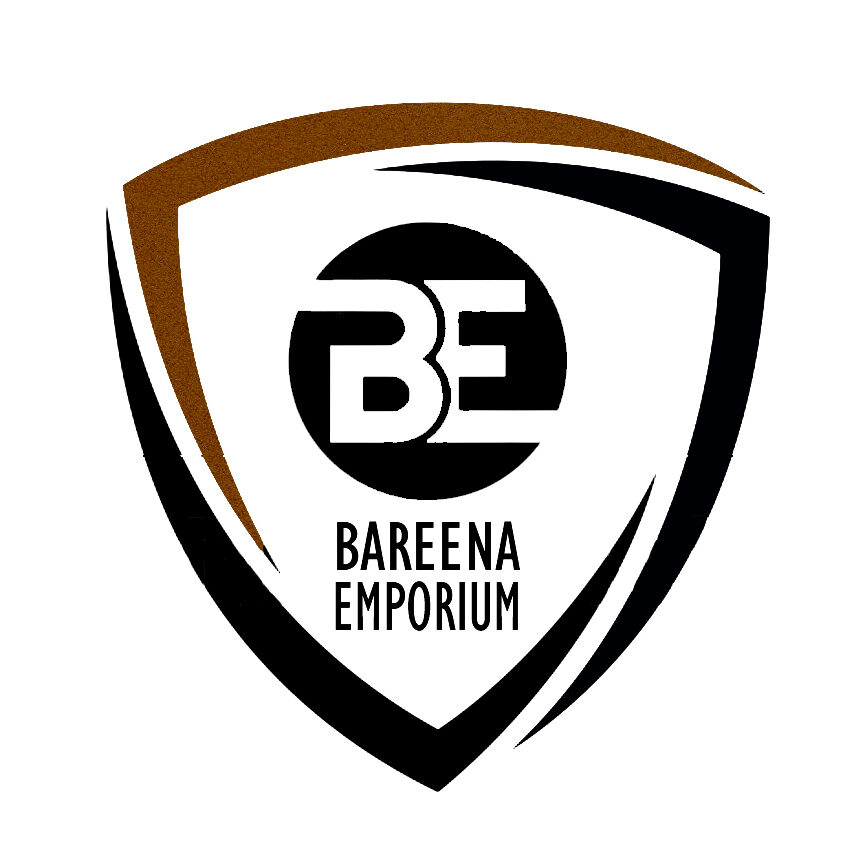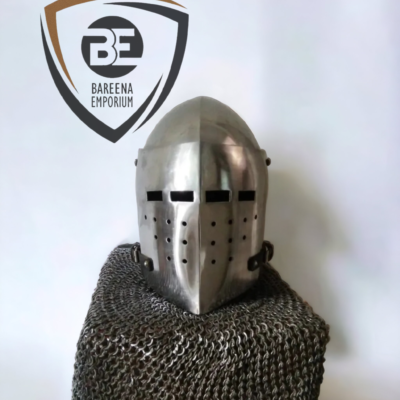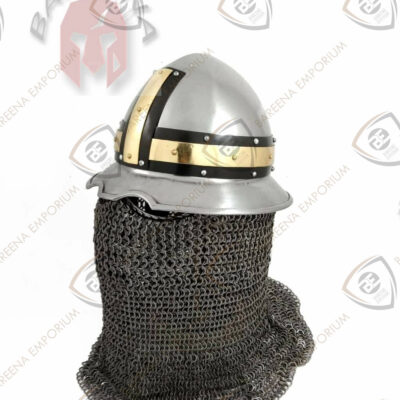Mesopotamian Helmet
Price range: $346.00 through $425.00
The Mesopotamian Helmet crafted from 14-gauge steel is a mesmerizing testament to the ancient artistry and craftsmanship of a bygone era. It embodies both form and function, offering not just protection for the warrior’s head but also an exquisite display of aesthetic sophistication.
This helmet’s exterior is a canvas of history, showcasing a delicate balance between practicality and artistry. The 14-gauge steel, though sturdy and reliable, carries a graceful curvature, forming an elegant silhouette that seamlessly melds with the contours of the human head. Its slightly conical shape widens towards the bottom, affording ample space for the warrior’s neck while also enhancing its visual appeal.
The surface of this Mesopotamian masterpiece is adorned with intricate detailing that narrates the story of a civilization deeply rooted in myth and legend. Etched into the steel are motifs inspired by the gods, animals, and celestial bodies that held immense significance in Mesopotamian culture. These meticulously chiseled patterns seem to come to life when they catch the light, shimmering like ancient constellations against the night sky.
ALL PRICES ARE IN US DOLLARS
( We offer additional padding space within the helmet to accomodate selected head size given below )
Description
The history of the Mesopotamian helmet is closely tied to the development of warfare and military technology in the ancient region of Mesopotamia. Mesopotamia, located between the Tigris and Euphrates rivers (modern-day Iraq, southeastern Turkey, and parts of Iran and Syria), was home to several ancient civilizations, including the Sumerians, Akkadians, Babylonians, and Assyrians. These civilizations contributed to the evolution of weaponry and protective gear, including helmets.
Here is a brief overview of the history of Mesopotamian helmets:
- Early Helmets: The earliest Mesopotamian helmets were simple leather or fabric head coverings that offered limited protection. These early helmets did not provide effective defense against the various weapons used in ancient warfare.
- Bronze Age Helmets: With the advent of the Bronze Age (circa 3300-1200 BCE), the production of metal helmets became possible. These early metal helmets were typically made of bronze and covered the head and sometimes the neck. They were often conical in shape and offered better protection than their earlier counterparts. These helmets were used by the Sumerians and other early Mesopotamian cultures.
- Lamellar Helmets: By the time of the Assyrian Empire (circa 9th to 7th centuries BCE), Mesopotamian helmets had evolved to include more advanced designs. One notable type was the lamellar helmet, made from overlapping metal or leather plates. These helmets provided better coverage and protection against various types of attacks.
- Assyrian Horned Helmets: The Assyrians are well-known for their distinctive horned helmets, which were part of their ceremonial and symbolic attire. These helmets were often made of metal and featured horn-like projections. While they may not have been practical for actual combat, they were important symbols of power and prestige.
Additional information
| Size | Medium Size (For 22.5/ 23 Inches Head Circumference), Regular Size (For 23.5/24 Inches Head Circumference), Large Size (24.5/ 25 Inches Head Circumference) |
|---|---|
| Metal | Mild Steel, Stainless Steel |







Reviews
There are no reviews yet